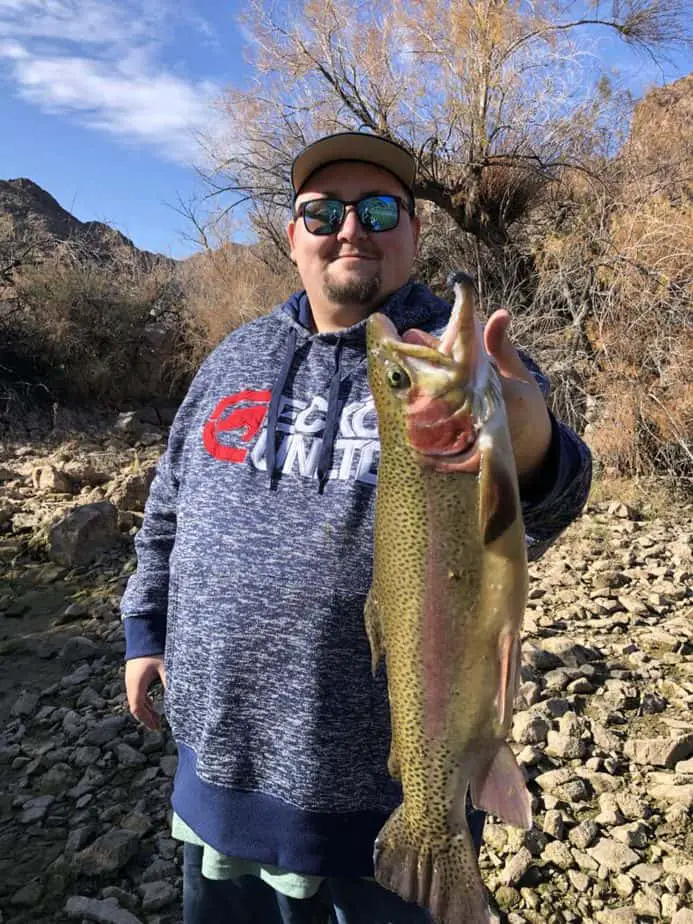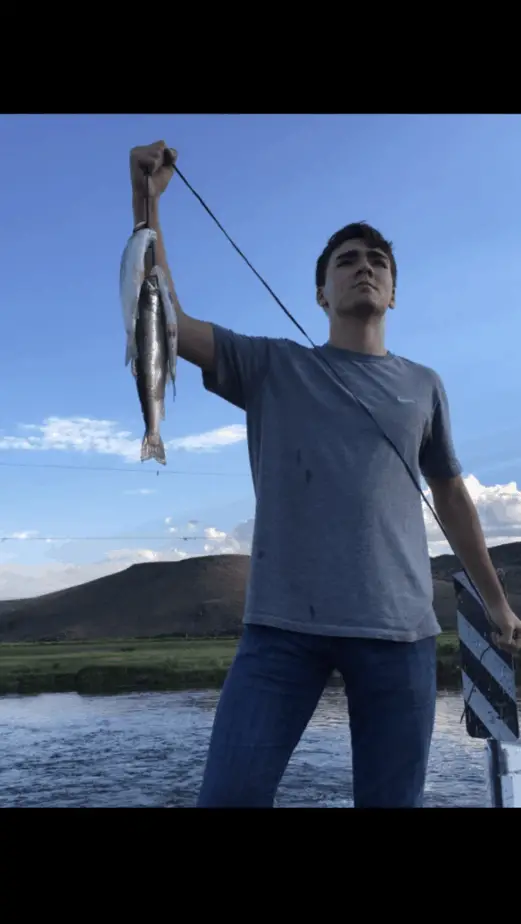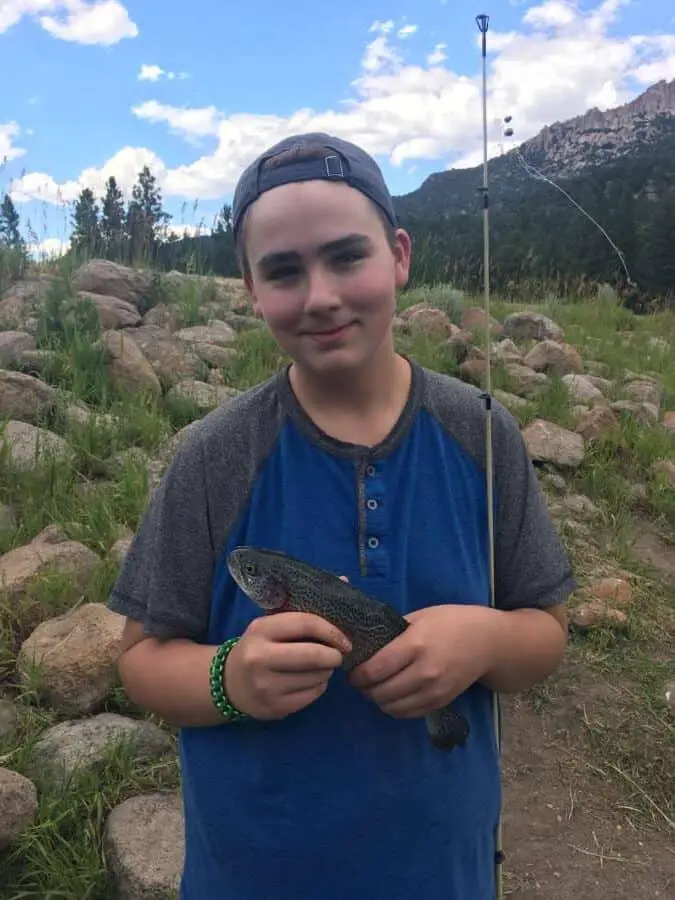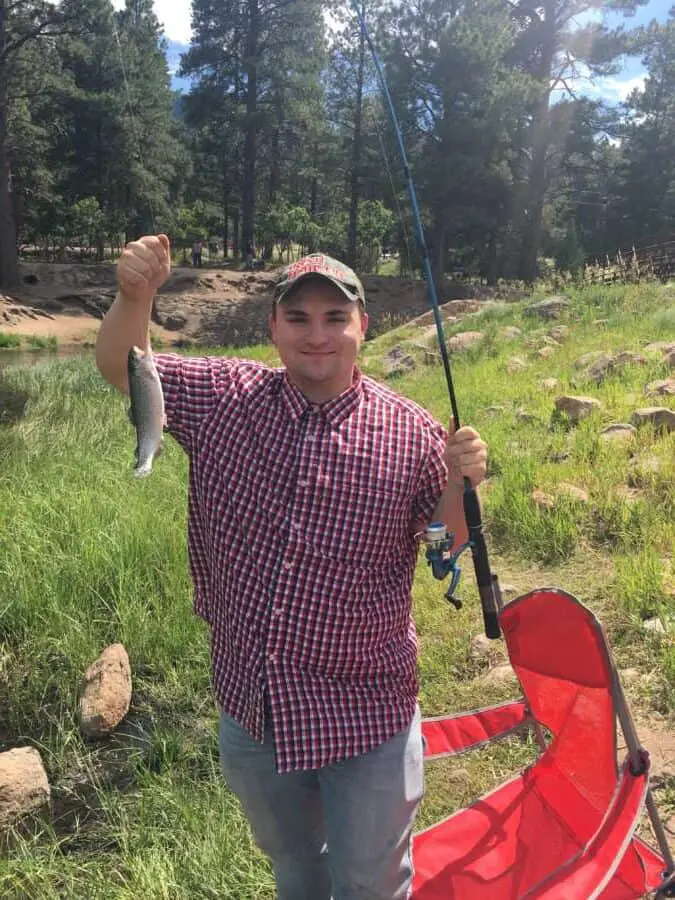As a fishing hobbyist, there is no question you enjoy a good challenge. In that same vein, you probably also get a kick out of fishing for the many different breeds out there.
Indeed, there is nothing better than landing a species that is normally very finicky, such as trout or salmon. It’s one of those things that makes your hobby that much more enjoyable and satisfying.

Of course, if trout is your preferred species, then there are definitely certain things you should know about them. As the old saying goes, “Knowledge is power.” This is definitely true when it comes to fishing for trout, and one area where you need to understand this species down pat would be during their spawning seasons.
Although it depends on where you fall in the debate, a trout’s spawning season can be an awfully good time to increase your chances of catching a large amount of trout.
Here are some things you need to know:
In order to fully understand the spawning habits of trout, you will also need to have some understanding of the habits of some salmon as well.
At first glance, this might seem like it flies in the face of all logic. However, there is definitely a need for a very quick biology lesson here.
First of all, you need to understand that all trout and salmon can be classified as “salmonids”, meaning they are each a part of the family called salmonidae. But that isn’t all. After you fully understand this, it will get even more confusing. If you are thinking that salmon are in one group and trout are in another, you would be sadly mistaken.
Instead, what you must understand is that both salmon and trout are spread out among three different genera. A good way to wrap your mind around this would be to realize that the rainbow trout you are trying to land is actually more closely related to their sockeye salmon cousin than to brook or brown trout.
The spawning habits of trout are entirely dependent on the genus of the trout.
Of course, I’m delving into science a bit much here, so – my apologies. However, in order to fully understand when a particular trout will spawn, you need to understand the genus of the trout in question. For example, the “char” (salvelinus) genus includes trout species such as bull trout, lake trout, and brook trout.
This genus will always spawn during the fall.
Additionally, the Atlantic salmon and brown trout are in the salmo genus, and they too will always spawn in the fall. This is definitely a hard-and-fast rule among these two: there’s simply no getting around it; they spawn in the fall and that’s, that.
However, when it comes to the Pacific versions of trout and/or salmon, it does have a tendency to get quite a bit trickier. You almost have to just memorize the different trout breeds and have it written down somewhere for your own personal reference.

Consider the following:
Consider the specific type. For example, the Dolly Varden trout, the Bull trout, the Lake trout, the Brown trout, and the Brook trout all have their spawning season during the fall months. However, the Rainbow trout and the Cutthroat trout all will do their spawning during the springtime.
Either way, it definitely depends on just what type of trout you are fishing for. Take a look at some of these different types of trout:
Dolly Varden Trout
Generally, you will find Dolly Varden throughout Canada and in many parts of the American Pacific Northwest such as Washington and Oregon. They will normally hatch in early spring and they will often have a lifespan of at least eight to ten years. The Dolly Varden will often migrate upstream to warmer spots each winter, simply because of the fact that they often cannot survive their first winters in their original areas.
Generally, Dolly Varden trout will mate at least once a year, often between September and November. The female Dolly Vardens will usually mate with more than one male in order to increase their chances of a successful spawn. The males will compete with each other in order to win the right to breed the most females. Of course, this can lead to just a few males breeding with most of the females. Dolly Varden will usually not spawn more than three times in their lifetime.
Rainbow Trout
Rainbow Trout will usually spawn every spring, and this usually means anywhere from February to May. They generally will not come out unless the temperature is at 42 to 44 F. Moreover, they will usually prefer shallow rivers with solid gravel bottoms. They are also partial to areas that have bedrock or spring creeks. Interestingly enough, you can often find Rainbow Trout in lakes.
If the area is moderately deep, with a cool water temperature and a sizable amount of shallows and vegetation, then chances are you will be able to find some Rainbow Trout in that area.
In case you were wondering, yes, Rainbow Trout do have a tendency to exhibit migratory behavior when they are spawning. They often will migrate into either streams or rivers when they are ready to spawn, which is called afluvial spawning behavior. Alternately, some Rainbow Trout will also do fluvial spawning behavior, meaning that they will simply stay in their main location and reside at outlets and inlets; this is called fluvial spawning behavior.
Brown Trout
Brown Trout are similar to Pacific Salmon in a lot of ways except for in one regard. Unlike Pacific Trout, Brown Trout will not die after they spawn.
Interestingly enough, the Brown Trout will usually spawn for multiple years and they will usually do in the same place, in one of their preferred spots. Additionally, the Brown Trout will often exhibit similar behavior to the Brook Trout, except the Brown Trout will take longer to mature than the Brook Trout – about three or four years to mature instead of the usual two years for the Brook Trout.
Although Brown Trout can be found in many North Shore streams, they also can be found in other areas. Interestingly enough, if the Brown Trout doesn’t have any barriers, they will often swim up through the headwaters to spawn.
Lake Trout
Lake Trout will often spawn in the autumn months between September and December. They usually prefer water from 48 F to 57 F. Additionally, the Lake Trout will often prefer to do their spawning in lakes that have a large concentration of boulders or lakes with large bottoms of rubble.
Alternatively, although it’s rare, it’s not unheard-of for a Lake Trout to spawn in a river as well. Lake Trout are a particularly long-lived species; they actually will often even live as long as 10 or 20 years. Interestingly enough, there are even some examples of Lake Trout that will reach a human-like lifespan of as long as 60 years or even more.
Because of their long life spans, Lake Trout will also often reach a weight of as much as 30 pounds. Perhaps not surprisingly, this definitely makes Lake Trout a favorite among anglers looking for their next challenge. When you couple that with their solid flesh and appealing flavor, you definitely can see why this trout is a popular goal for anglers.

Spawning Behaviors
Of course, you will also need to pay attention to the specific spawning behaviors of the different types of trout you might encounter. Naturally, if you understand these spawning behaviors, it could be a valuable asset to you in your angling pursuits. Here are some things you should keep in mind:

Here is further research on the Spawning Behavior Of Trout
Water Temperature is a Big Deal
It seems that in almost every aspect of fishing, water temperature can play a tremendous role in whether you are going to have a successful angling experience or not. This is definitely true when it comes to targeting fish around their spawning times as well. For example, you should be aware that most trout will prefer a certain temperature to do their spawning activities, and at times that temperature is very specific and it can vary between the different types. Moreover, different trout will have different spawning behaviors. Let’s take a look at a few of these differences:
Lake Trout
Since Lake Trout are such a favorite among anglers, let’s take a look at them first. The best way to sum it up is that they strongly prefer to spawn in waters with a slightly colder temperature.
A good rule of thumb regarding Lake Trout is that they strongly prefer spawning grounds that have rocky bottoms. As we have mentioned before, they just love reproducing in areas that have boulders or tiny crevices, so you definitely can use that to your advantage when you are fishing for them.
One way that you can tell that Lake Trout is spawning is because if you look closely, you will be able to notice these eggs in these cracks and crevices.
Additionally, these eggs will normally hatch in March or April. You should position your baits and jigs accordingly if you want a better shot at catching this trout.
Additionally, unlike other trout, Lake Trout will go ahead and stay in their home environment to spawn. Yes, you read that right, the Lake Trout will stay right in the lake to do their spawning! Instead of migrating, the Lake Trout will simply look for a safe area within the lake to lay their eggs. If they cannot find a rocky slope, they will settle for a shore of gravel or a sandbar.
Brook Trout
Brook Trout is another species that is somewhat similar to Lake Trout. Like the Lake species, these Brook Trout can often be found spawning in areas that have sand or a gravel bottom with some solid vegetation.
They will also often be found in areas that either have a solid ground water percolation or areas of a lake that are being fed by a spring. Of course, another wrinkle that you have to keep in mind with Brook Trout is that because they mature quicker than other trout, the Brook Trout that you catch might be a bit smaller than other types of trout.
Moreover, the younger this type of trout is, the more likely they are to be found easier. The good news for anglers is that these younger Brook Trout can normally be found buried in aquatic vegetation or near the shoreline in shallow water.

What of an Individual Fish?
Of course, knowing the time and the location for the spawning behaviors of a particular trout is a good way to tell if they might be spawning. However, it does get a bit trickier when you are looking at an individual fish. Have you caught a trout and wondered whether it might be spawning? While it can be difficult to tell completely, there are certain tell-tale signs on an individual fish that you can look out for. Take note of the following:
Their Jaws
The shape of a male trout’s jaw is one tell-tale sign that it might be spawning season for them. A male trout will develop a hook on their jaw that is very pronounced and very noticeable, and it even has a term for it. They call the hooked jaw of a spawning trout a “kype.”
Their Colors
The colors and markings on the trout will become much more pronounced as the trout begins to look for a mate. Indeed, if you encounter a trout with a belly that has fiery colors, then chances are they are mating.
Rounder Belly
A female trout will have a belly full of eggs, and this will definitely show as a stomach that is rounder and softer.
What of the Particular Environment?
Finally, another tell-tale sign that the trout might be spawning is the environment that you are fishing in. If you notice such things as “redds”, which are better known as patches of gravel in the stream that appear to have been cleaned off, then chances are there is some spawning going on.
Although these next two take some experience to fully understand, if you notice that the fish seem to be more aggressive than usual that could be a sign.
Trout and salmon will get more aggressive in their territory during the spawning season. Finally, if the trout seem to be venturing out more often, there might be a reason why they are engaging in such risky business. Simply put, it’s probably their spawning time.
Either way, if you fully understand the nature of the trout, the signs they exhibit, and the signs in your fishing spot, then you will definitely be better equipped to fish for trout during their spawning season.
Are you seriously looking turn your hobby into a business? I recommend joining Income School. I’ve been an Income School member for a little over a year and joining was the best decision I’ve made in working toward my business goal of making money online.
If you have social media or a blog or even a business in fishing like a fishing guide, you can make money by giving away $10 store credit to your friends and followers. Click Here to find out how

